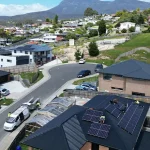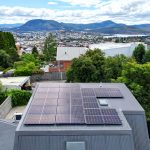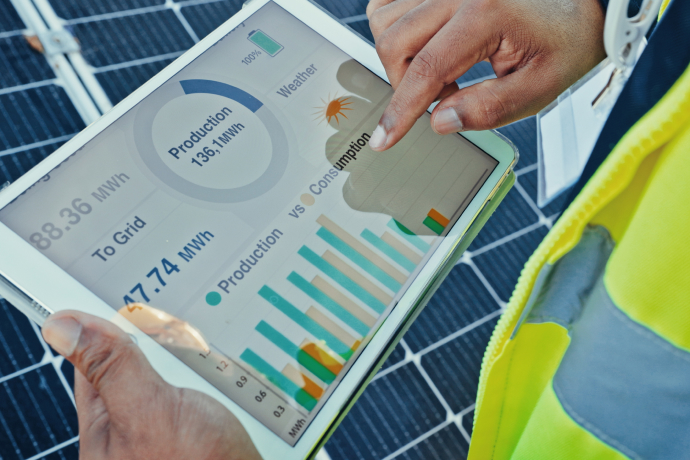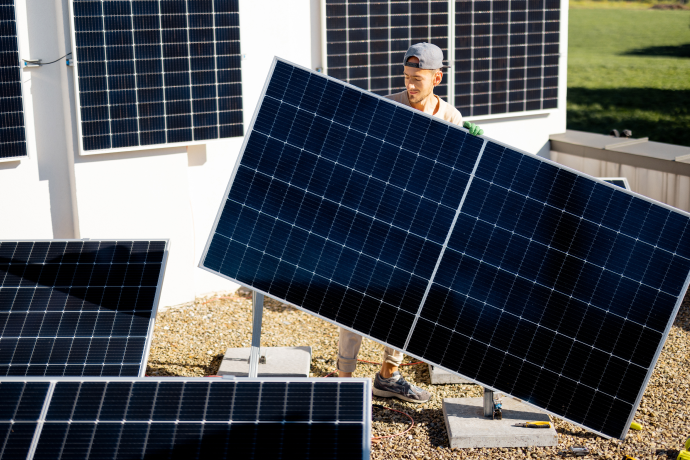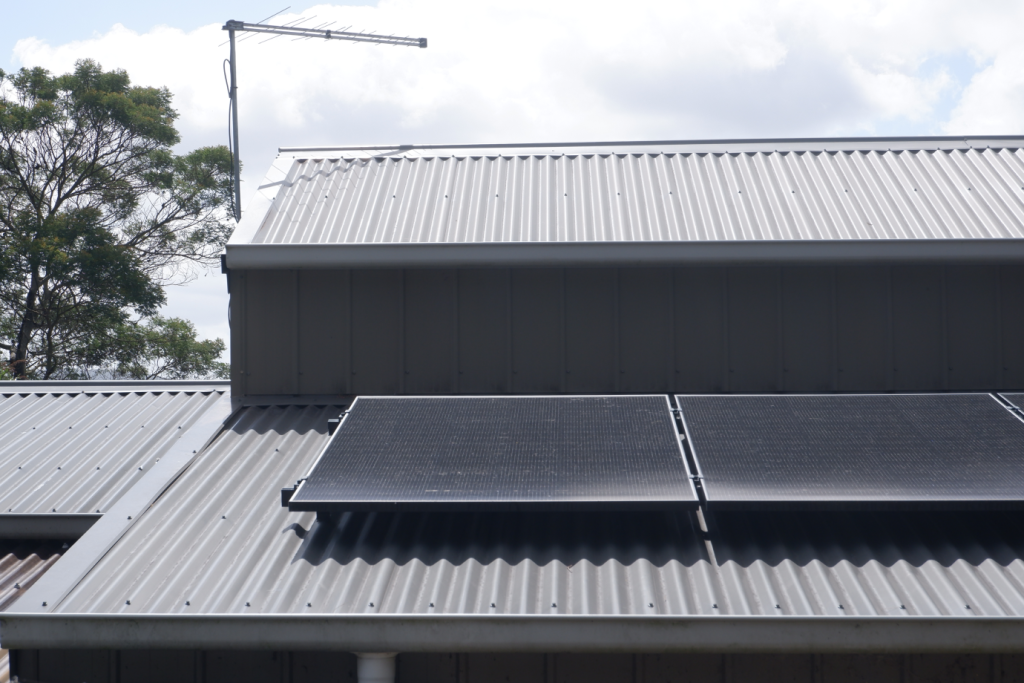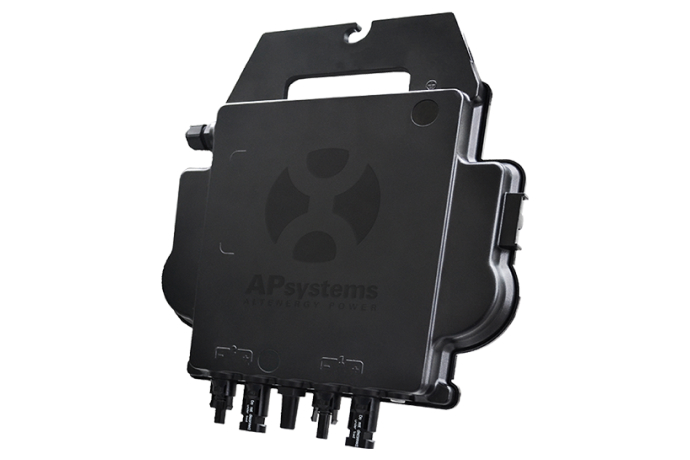When installing solar panels one of the questions is which type of panel to choose from – monocrystalline or polycrystalline. Both panels produce the same amount of energy but the monocrystalline panel is smaller. With this in mind, space is the primary factor in deciding between the two types of panels. The difference between monocrystalline and polycrystalline panels has been somewhat confusing so we have put together a detailed explanation of the main differences and how to decide which is best for you.
What are Monocrystalline Solar Panels?
Monocrystalline solar panels are a type of photovoltaic panel that is made from a single continuous crystal structure. Manufactures achieve this by growing a large single crystal of high purity silicon and slicing it into thin wafers. These wafers are then assembled to create the solar cells that make up the panel. The single uniform crystal structure absorbs most wavelengths of light which gives the monocrystalline solar panel its characteristic black appearance.
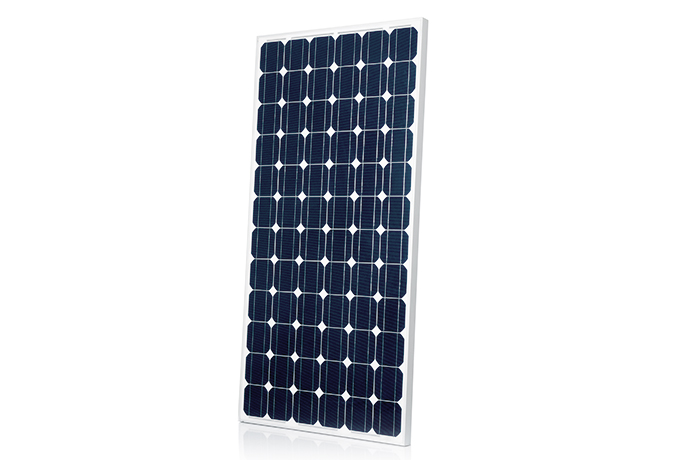
What are Polycrystalline Solar Panels?
Polycrystalline panels are a type of photovoltaic panel made from blending multiple pieces of silicon together which are cooled and then sliced into wafers. Unlike monocrystalline panels with their single silicon crystal construction, polycrystalline is made from multiple pieces of silicon. The multiple silicon crystals within a polycrystalline panel reflect the light which gives this type of panel its blue hue.
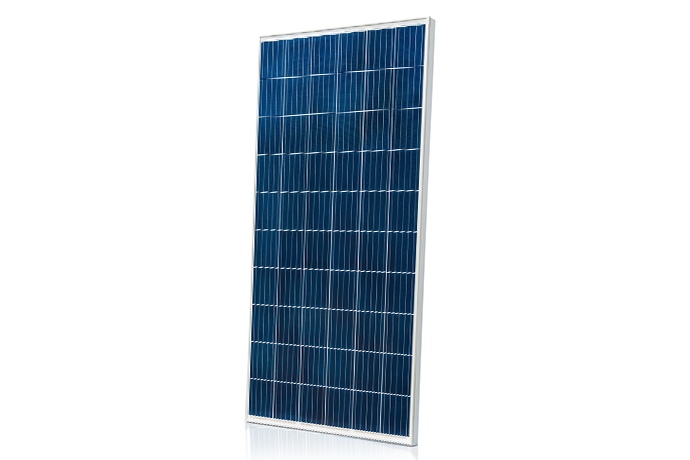
Comparing monocrystalline and polycrystalline solar panels
The purpose and function of monocrystalline and polycrystalline solar panels are both the same – to capture the energy of sunlight and convert it into electricity. They both deliver the same amount of power, and serve the same function overall. However, there are some differences between the two. A monocrystalline panel is on average, more expensive than a polycrystalline panel. A monocrystalline panel will cost between 30c to 50c more per watt; roughly 25%, (without installation) than its polycrystalline counterpart. However, monocrystalline panels also produce about 4% more energy than the same size polycrystalline panel.
The reason monocrystalline panels are more expensive and produce more energy has to do with the cells themselves, as opposed to the panel. An individual monocrystalline cell is more efficient in capturing and producing power than an individual polycrystalline cell because the monocrystalline cells are cut from a single crystal of silicon which makes it easier for the highest amount of electricity to move through the panel. Polycrystallines cells are made from multiple crystals of silicon which results in a fragmented structure where the electrons cannot move as easily which decreases the panel’s efficiency. As a result, to produce the same amount of energy as a monocrystalline panel, polycrystalline panels need to be slightly larger. The size difference is different between manufacturers but usually a polycrystalline solar panel will be between 10-20% larger than a monocrystalline panel to produce the same amount of energy.
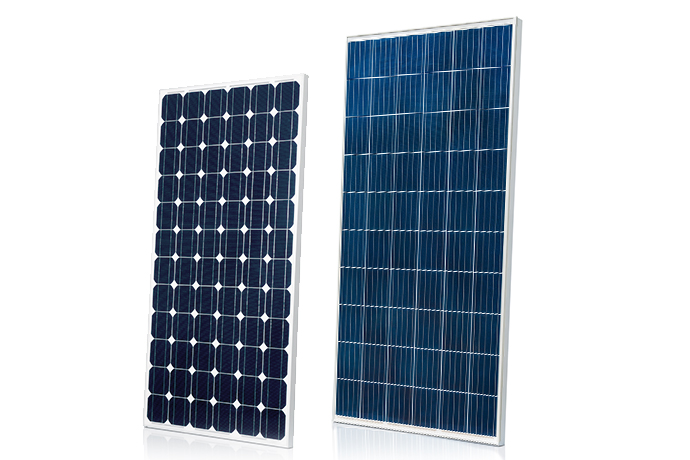
Which is Better For You, Monocrystalline or Polycrystalline Solar Panels?
The solar panel size impacts the choice of which type is best for a variety of reasons. The most important and outstanding reasons for choosing one over the other are roof size and orientation.
- Roof size: If you have plenty of roof space to support a solar system that uses polycrystalline panels, there is no real benefit in opting for a monocrystalline system, aside from a very small efficiency boost. If you have very limited usable roof space, you should opt for Monocrystalline solar panels to make the most of the limited area.
- Roof orientation: Your roof’s orientation can make a difference to the type of panel you will need to install. The ideal orientation in the southern hemisphere is north facing for maximum sunlight exposure. The best orientation is 35 to 40 degrees so that the solar panels are close or equal to the latitude of the home. Solar panels that are not facing the right direction can lose between 10% and 20% efficiency. Sun exposure to the panels is the most important factor in energy conversion and maximum solar panel output. A large roof without the correct orientation may require the higher efficiency of monocrystalline solar panels to capture more of the sunlight.
Additional Differences Between Monocrystalline and Polycrystalline Panels
Physical appearance
If roof space and orientation is not an issue, some people may prefer the look of one panel over the other. Monocrystalline solar panels are black or dark blue with a round edge, and are slightly smaller for the same power rating. Polycrystalline solar panels are slightly larger, have a square shaped edge and are mostly light blue. Aesthetic appeal may be important for some homeowners, as it can directly affect your house’s valuation, and one look may be preferred over the other.
Average cost
Monocrystalline are a more expensive solar panel to buy and install than polycrystalline solar panels, largely due to their manufacturing process. The average cost of monocrystalline solar panels is $1.50 to $2.50 per watt, while polycrystalline solar panels on average cost between $1.20 and $2.00 per watt. A 6.6kW monocrystalline solar system might cost between $5,500 and $9,000 after rebates, while the same sized polycrystalline solar system might cost between $4,500 and $7,500 after the same rebates.
Lifespan
The lifespan of monocrystalline and polycrystalline solar panels is also something to consider, however the difference is minor. Monocrystalline solar panels usually have a higher warranty overall, and are reported to operate a few years longer than poly panels at 25 to 40 years. Polycrystalline solar panels usually have a lifespan of 25 to 35 years. However, keep in mind if you keep your solar panels regularly cleaned and maintained, they will almost always outlast the warranty anyway.
Temperature Coefficient
Your solar panel’s temperature coefficient has to do with the influence the panel’s temperature has on its productivity. Temperature coefficient is the measure of how much the solar panel’s power output decreases with every increase in degrees celsius. A good temperature coefficient will be as close to zero as possible, ideally between 0.2% and -0.5% per degree celsius. Most polycrystalline solar panels have a temperature coefficient between -0.37 % and -0.5 % degrees celsius. Monocrystalline solar panels have a slightly lower temperature coefficient between -0.3 % and -0.4 % degrees celsius. This means that monocrystalline solar panels will perform better in warmer climates.
What is the best type of solar panel for Tasmania?
Monocrystalline and polycrystalline solar panels convert sunlight to electricity, and are both capable of putting out the same amount of energy. Choosing between them mainly comes down to the roof space and roof orientation of your home and personal choice. If you prioritise maximum power output in a limited space, then monocrystalline panels will be right for you. If cost is a concern but space isn’t, you may decide to choose polycrystalline panels. For geographical areas where there may be more cloud cover like Tasmania, monocrystalline or polycrystalline solar panels can both be a suitable choice. Due to advancements in technology, these two types of solar panels both perform well in lower light conditions.
Both monocrystalline and polycrystalline solar panels are proven technology for converting sunlight to electricity but deciding between them can be difficult. Online reviews comparing monocrystalline and polycrystalline solar panels can be quite confusing, so we put together a straightforward explanation of the difference between the two types of solar panels. Basically, due to technology improvements over the years, both monocrystalline and polycrystalline are the most efficient types of panels to install. They are made differently which leads to some small differences like panel size. Provided you have a large enough roof with the right orientation, both types of panels will suit your home. For further information on which type of panel is best for you contact the experts in solar panels at Tasmanian Safer Solar.

